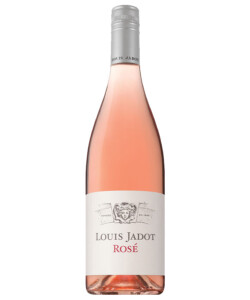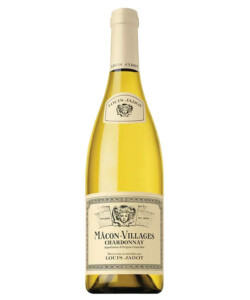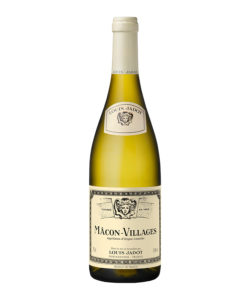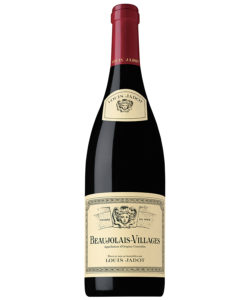Founded in 1859 by Louis Henry Denis Jadot, Maison Louis Jadot is easily one of the most recognizable French wine brands in the United States. With its distinctive Bacchus emblem on every bottle, Louis Jadot produces hundreds of wines across red, white, and rosé in Burgundy (and Beaujolais). And while some of the world’s most expensive bottles of wine come from Burgundy, Louis Jadot is popular for both its approachability and affordability.
Though the brand produces some prestigious bottles that go for thousands of dollars, its entry-level Bourgogne and Village-level expressions are often many wine drinkers’ first foray into French wine. Using grapes from their own vineyards as well as those sourced from across the region, Louis Jadot produces in various appellations to showcase Burgundy’s unique and diverse terroir.
From the house’s roots as a grower to an eventual appearance on a popular HBO show, here are eight things you should know about Maison Louis Jadot, one of Burgundy’s largest wine producers.
-
Louis Jadot was born into a family of grape growers.
By the time Maison Louis Jadot was founded in 1859, the Jadot family had already been involved in Bourgogne wine production for over three decades. Originally from Belgium, the family immigrated to Beaune in the 1790s and purchased a partner share in the Chevalier-Montrachet Les Demoiselles vineyard. In 1826, when Louis Henry Denis was just 5 years old, the family patriarch purchased the Clos des Urules vineyard, a small premier cru plot in the village of Beaune that remains an important vineyard for the brand today. When Louis Jadot’s father died, ownership was passed to Jadot’s uncle, whom he later went on to work for selling and distributing the vineyard’s wines. Through his vocation, the young Jadot established a strong clientele, allowing him to hit the ground running in 1859 when he purchased the négociant firm Lemaire-Fouleu, which he renamed Maison Louis Jadot.
-
Maison Louis Jadot is both a négociant and a grower.
Though a vineyard was already under family control by the time Maison Louis Jadot was established, the purchase of the négociant firm allowed the winery to expand operations. As a négociant, Louis Jadot purchases grapes from various growers across Burgundy before vinifying and bottling under its own label. But the key to the house’s future success would be owning more vineyards of its own. When Louis Henry Denis passed away, his son Louis Baptiste assumed control of the maison and focused on expanding export markets to allow for the purchase of more vineyards. As he broadened the winery’s distribution network throughout Europe, Louis Baptiste reinvested the profits through the purchase of premier and grand cru vineyards throughout the Côte d’Or. Today, the naison owns a total of 585 acres of vineyards. Bottles produced from these vineyards’ yields will have a rectangular box at the bottom of the label reading “Domaine Louis Jadot.”
-
All Louis Jadot wines have been exclusively imported by the Kobrand Company since 1945.
Following Louis Baptiste’s death, ownership of the firm was left to his eldest son, Louis Auguste, who sought to bring Louis Jadot to new markets in Great Britain, Holland, South America, New Zealand, and the U.S. In 1945, Louis Auguste met with Ryudy Kopf, who had established the Kobrand Company the year before to import and market wine and spirits in the U.S. The two men established a working relationship with each other and that year, the Kobrand Company became the exclusive U.S. importer of Louis Jadot wines.
-
The Jadot family sold the brand in 1985.
In 1954, André Gagey joined the team at Maison Louis Jadot as an assistant to Louis Auguste, who passed away in 1962 with no heirs. As such, ownership was transferred to his widow, Madame Jadot, and Gagey assumed full responsibility over the firm’s operations, acting as managing director for the next three decades. In that time, succession issues became more apparent, and Madame Jadot made the decision to sell to the Kopf family (of the Kobrand Company). The Gagey family would continue to manage the estate vineyards, with Pierre-Henry Gagey succeeding his father to become president and CEO in 1991, working at the company for the next three decades. In 2023, Pierre-Henry Gagey was replaced by Thomas Seiter, though his son, Thibault Gagey, is still involved as Louis Jadot’s managing director.
-
The brand produces two distinct lineups.
Maison Louis Jadot straddles the line between entry-level Burgundies and fine wine with its two lineups: the Classic line and the Great Burgundies line. The Classic line, which is sometimes referred to as the Beaujolais Mâconnais Varietals (BMV) line, is intended to be an introduction to the world of Burgundy, with each crafted to be approachable on the palate (and easy on the wallet). This includes some of the brand’s most widely available options like Beaujolais-Villages, Pouilly-Fuissé, Chablis, and Mâcon-Villages Chardonnay. The Great Burgundies line, on the other hand, prioritizes the unique terroir of premier and grand cru vineyards in the Côte d’Or. Each bottle includes a label denoting the specific vineyard from which its grapes originated, with some wines priced well into the thousands.
-
Maison Louis Jadot uses a house-special technique called réplis.
While Village-level wines are a step above the overall Bourgogne appellation in Burgundy’s cru system, it is still not as high as premier or grand cru. So, to enhance the complexity of these wines, winemakers at Louis Jadot incorporate a percentage of wines from a higher appellation into their Beaujolais- and Mâcon-Villages blends, a process known as réplis. For example, grapes from the 10 Beaujolais crus are used in the brand’s Beaujolais-Villages to enhance flavor and quality.
-
In 2013, Louis Jadot purchased its first vineyard outside Burgundy.
After 154 years of operating exclusively in Burgundy, Louis Jadot purchased its first vineyard outside the region, in Oregon’s Willamette Valley. Founded in 2013, Résonance was established by Thibault Gagey and Jacques Lardière, a native Burgundian who had just finished a 42-year run winemaking at Louis Jadot. Ready to take on a new project, the two men visited the vineyard in 2012 and immediately fell in love. They returned to Burgundy to speak with Pierre-Henry Gagey, then-president of Louis Jadot, who agreed to purchase the land, and Résonance was born. Today, the winery owns a total of 139 acres that are used exclusively to cultivate Pinot Noir and Chardonnay.
-
A bottle of Louis Jadot appeared in a popular HBO show.
In 2023, Louis Jadot received quite a bit of social media attention after a bottle of its Beaujolais-Villages Combe aux Jacques guest starred in an episode of the popular apocalyptic drama “The Last of Us.” The wine appears in the show’s third episode, titled “Long, Long Time,” and served as an important fixture in the tear-jerking story of Frank and Bill, played by Murray Bartlett and Nick Offerman. It also apparently makes for a delightful pairing with rabbit.




